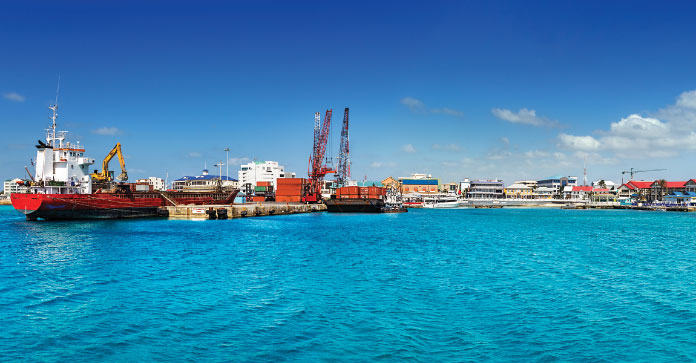Early in 2014 the arrival of a book in North America, entitled simply Capital, has proven to be the first challenge to the generally accepted, conventional wisdom of the nature of economic society today. The author, French economist Thomas Piketty, has become somewhat of an instant celebrity among many politicians and academicians.
For far too long economists have neglected the distribution of income and wealth, partly because of the significant high growth rates observed in all the developed countries in the post-WWII period; nearly all social groups in that era shared in the benefits of growth.
Piketty’s message has resonated mainly for two reasons: First, contrary to his predecessors, his model relies on a formidable statistical apparatus. Second, it was time for the issue of inequality to be put back at the heart of economic analysis, especially in the light of heightened global political interest in economic disparity.
Even though the Cayman Islands is a very small economy, Piketty’s message applies as much as it does to large, powerful economies.
Importantly, the growing gaps in the income distribution – between those at the top of the income distribution and those in the middle and lower levels – is an issue that Cayman increasingly must contend with.
With the country’s extraordinary economic success occurring over only the last 40 years, those who were in a position, and had the initiative, to take advantage of the opportunities that came with rapid growth today dominate the upper level of the income distribution. In demographic terms, the wealthiest segment of the Cayman population tends to be at the older end of the country’s profile.
As the economy evolved from being dominated by growth to one dominated by competition – domestic and international – the economic opportunities have diminished. Younger people had, and have, fewer economic opportunities than their predecessors. It is no surprise to see a growing divide between the income and wealth of the young and their parents’ generation in Cayman.
Piketty’s Challenge
In Piketty’s terms, those whose wellbeing is derived from capital (i.e., the ownership of businesses and other assets) generally enjoy higher rates of growth than those who derive their well-being from wages and salaries. With older people owning more capital than younger people, the growing divide is inevitable – and, according to Piketty, unsustainable.
Those who own capital have an increasing capacity to produce goods and services, while the capacity for the majority of consumers to consume more goods and services grows much more slowly. Since business revenues are determined by consumer expenditures, eventually business owners will not be able to realize the revenues they need to enjoy the rates of return to which they have become accustomed.
The practical question for Cayman concerning this economic reality is how can younger people be given the opportunity to maximize their allotment of income distribution?
Empowering Youth Through the YMCA
In early July of this year, the YMCA held its Eighteenth World Council (an event that happens every four years) in Estes Park, Colorado. At that event, the YMCA of the Cayman Islands became an official member of the Alliance. Pastor Randy Von Kanel, Chair of the Board of the YMCA of the Cayman Islands, and its first CEO, Gregory Smith, were there to represent Cayman.
I had the pleasure of being a member of the Canadian delegation.
 With 1,300 delegates representing 83 nations in attendance, the discussions were as diverse as they were provocative. A major task for the week-long meeting was to establish the strategic plan for the global YMCA movement for the next four years. A thorough discussion led to a very pointed strategic plan that was unanimously adopted. The focus was clearly, and absolutely, on empowering the world’s young people – that is, people under the age of 35.
With 1,300 delegates representing 83 nations in attendance, the discussions were as diverse as they were provocative. A major task for the week-long meeting was to establish the strategic plan for the global YMCA movement for the next four years. A thorough discussion led to a very pointed strategic plan that was unanimously adopted. The focus was clearly, and absolutely, on empowering the world’s young people – that is, people under the age of 35.
The strategy rests on four pillars: health, civic engagement, the environment, and most importantly, employment. It is no coincidence that YMCAs around the world recognize the need to provide more opportunities for youth. What Piketty has done is reveal one aspect of the precarious position most young people, including those in Cayman, face today.
As the new YMCA of the Cayman Islands determines its role in Cayman, I am confident that they will have as one of their key principles the need to empower the youth of the islands.
The Suppliers of Labor
With the challenge defined – particularly how to provide more meaningful employment opportunities for youth – it is necessary to consider some realities that must be faced if this challenge is to be met.
First, young people who supply labor represent, in economic terms, a large portion of the Cayman population: About 25 percent of the Cayman population is between 20 and 35; about 45 percent is 35 or younger.
Every young person has a set of characteristics that he puts forward when he is seeking employment. From the supply side of the labor market, these characteristics determine the degree to which one will share in the income distribution of the economy. Clearly, the primary characteristic for meaningful employment is not just being young or just being Caymanian. Those are not job qualifications.
Young people must demonstrate the skills, abilities, and ambitions that make them productive enough to warrant equitable salaries and move up the income distribution curve.
More often than not, education will determine whether a young person has the qualities necessary to move up the income ladder. Unfortunately, to the detriment of its youth, education is generally still not seen in this way in Cayman.
The Demanders of Labor
Having young people with the qualities necessary to make productive economic contributions is a necessary condition to empower youth through employment, however, it is not enough. The willingness of those providing meaningful job opportunities for young people is the sufficient condition.
In effect, all employers everywhere possess the power to make hiring decisions – to provide employment opportunities for young people. In Cayman, those who benefited most from the country’s growth over the last 40 years are now in positions to employ and encourage the next generation.
In earlier years, it was easier. Notably, in the post-WWII era, employment grew rapidly in North America. More importantly, for most of that era, wages grew faster than prices. This is what the great, middle class was built upon. It is no surprise that this era saw growing consumer spending as incomes increased, and secure, long-term employment opportunities were plentiful.
In this post-WWII era, increasing employment and paying productive people well was seen to lead to business success. When employment and pay increased, so did profits.
Today, the conventional wisdom suggests otherwise.
As we write these words, Microsoft’s new CEO has announced the company is cutting 18,000 jobs (14 percent of its workforce), the largest layoffs in its history. On the news, the stock price rose as is a common occurrence when massive layoffs are announced.
Looking to a Sustainable Future
Practical remedies in Cayman and elsewhere are called for. One way forward is to address the issues Piketty has identified – change on both sides of the labor market.
Those aspiring to meaningful employment and opportunity in Cayman must accept that the efforts required are much more demanding than they were for the previous generation. Put another way, the “rules of the engagement” in the labor market have changed.
For the sake of Cayman’s future, there must be a widespread acceptance that the status quo cannot lead to a bright economic future. Cayman achieved its success over the last 40 years by challenging the status quo for the sake of future generations.
Perhaps the time has come for a new era of ambitious, forward-looking thinking that will empower the next generation of leaders in Cayman.
Dr. Phillips, an internationally renowned economist, has served on the faculty of the University College of the Cayman Islands. He currently practices his craft at Trent University in Peterborough, Ontario.





















